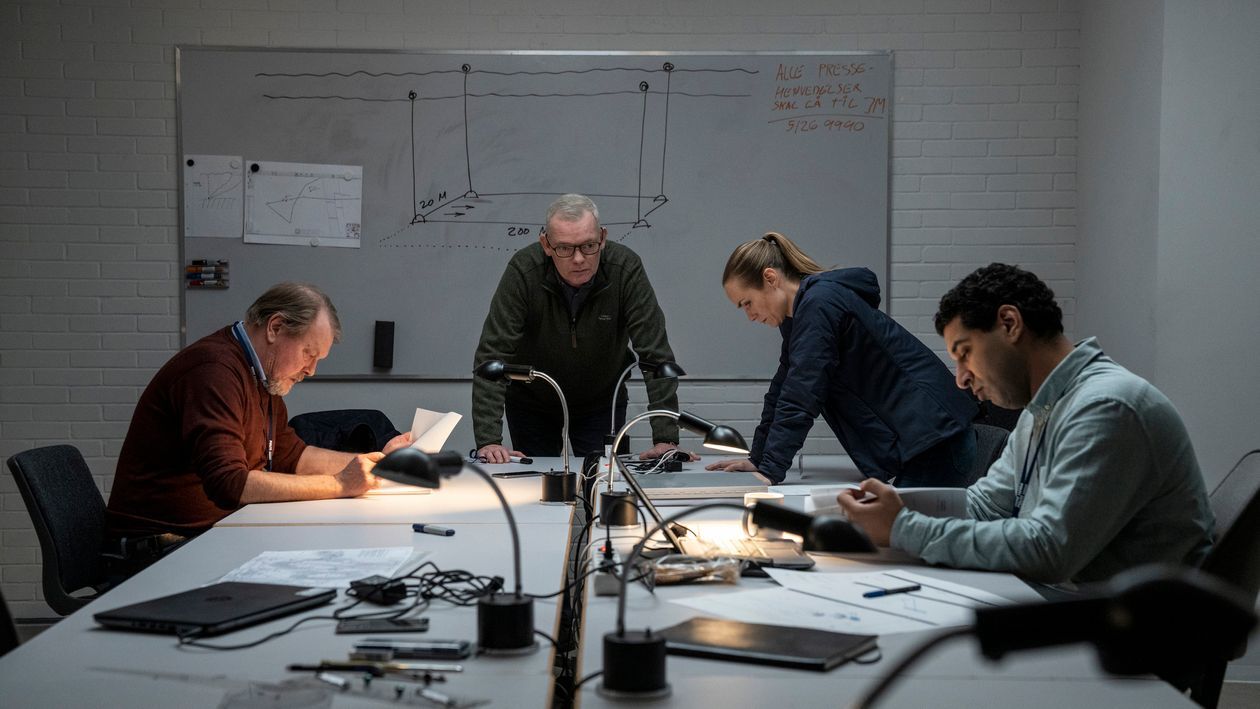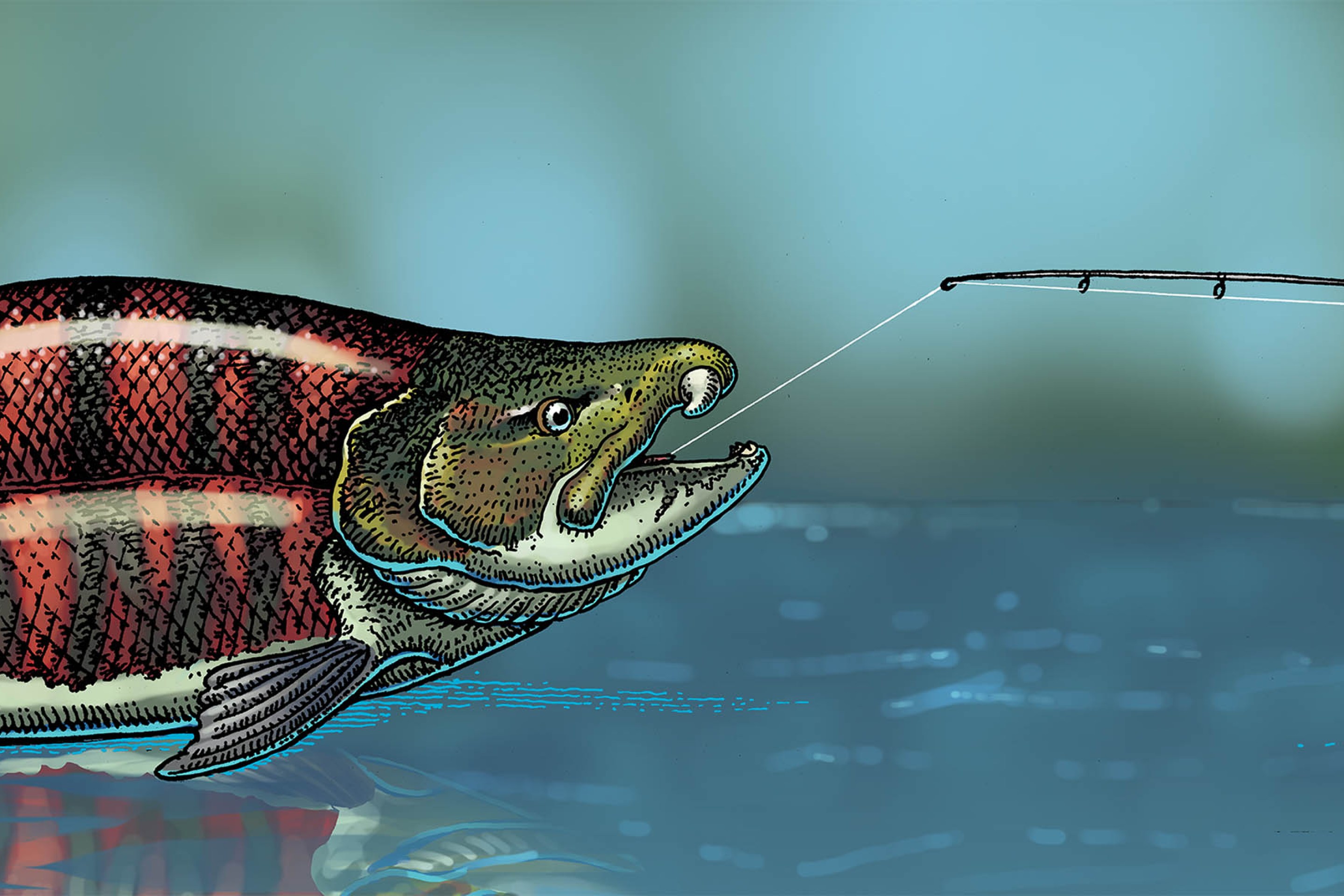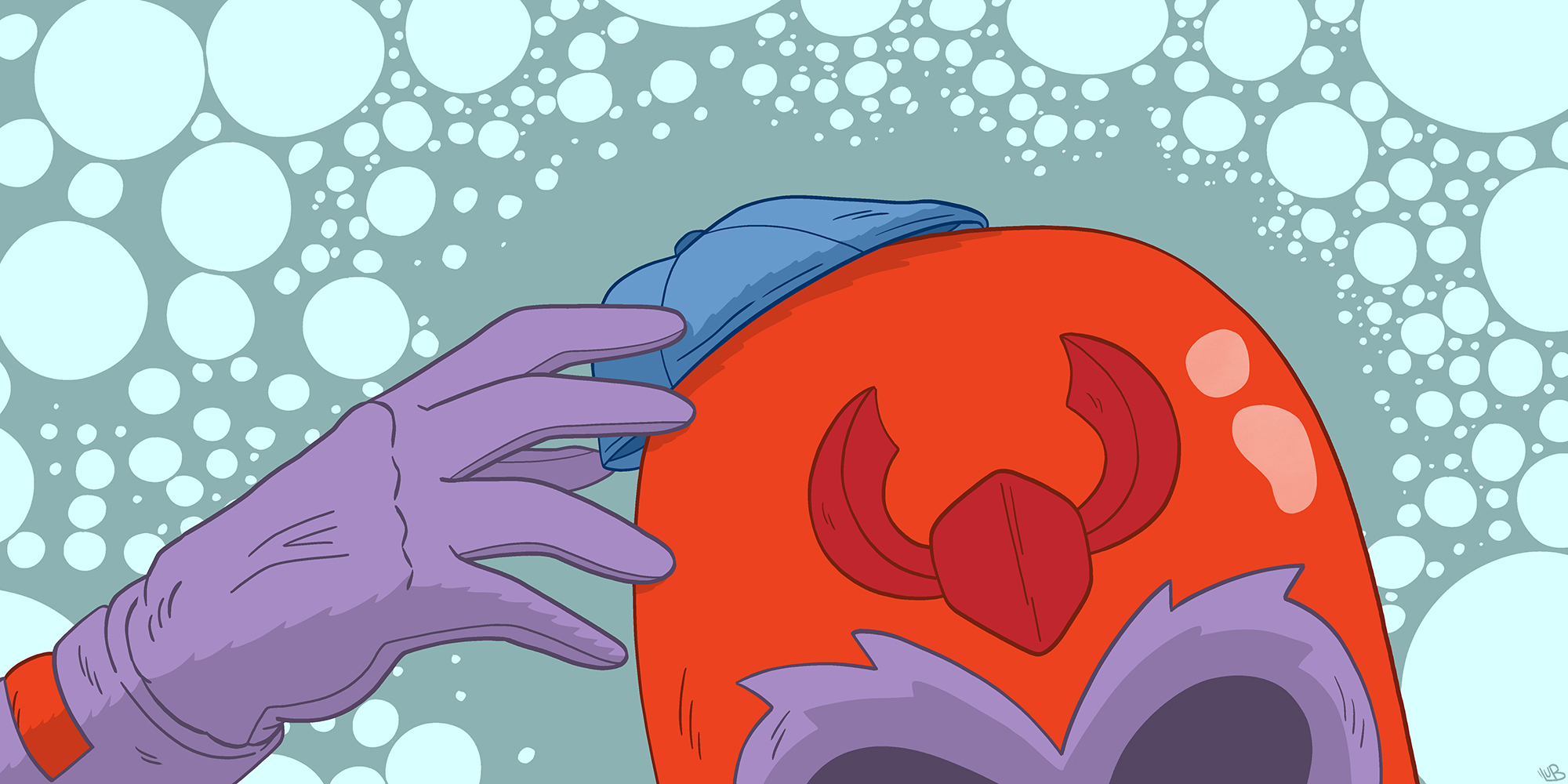The Investigation literalizes the word "dogged." The Scandinavian HBO series based on the investigation into journalist Kim Wall’s 2017 murder by Peter Madsen spends a significant amount of time with dogs, specifically their noses. Following Wall’s disappearance in Danish waters—after her torso washes ashore in Sweden—her father (Rolf Lassgård) suggests the police use cadaver dogs to find the rest of his daughter’s body. But Denmark doesn’t have any. And it isn’t until the head of the investigation, Jens Møller Jensen (Søren Malling), observes his own pup effortlessly locate a bird he shoots down in the forest that he realizes how useful they can be. “Dogs have 200 million scent receptors,” he is told. “We only have 5-6 million.”
Thus begins a multi-episode arc in which cadaver dogs bob atop inflatable boats and attempt to sniff out the wake of a terrible crime, while the humans complain—“Your dog isn’t working,” one cop says. Slowly, the police come to the realization that they actually have to calculate and compensate for the wind, then they realize that it’s the currents that redistribute the smell, and finally they come to understand that the dogs are smelling fat not gas, which moves slower in those currents. Dogs—just like doggedness—are instrumental here. It is the show’s willingness to dedicate so much of its runtime to them that sets it apart from every other crime series that has begun to clog every other streaming platform.
Creator Tobias Lindholm describes his six-hour series, in which accuracy is key, as “investigation crime” as opposed to “true crime.” And it does make sense to separate them—The Investigation is a true procedural in the way true crime series so rarely are. It’s a whiplashing swivel from this to Netflix’s recent spate of true crime documentaries, most recently The Ripper and Night Stalker: The Hunt for a Serial Killer, as well as HBO Max’s Murder on Middle Beach, all of which, to varying degrees, express the worst of what the true crime industry has wrought. From the virtually pornographic forensic descriptions of the crimes to the mawkish treatment of the victims to the idolatry of the criminals, the commitment to the 200-year-old conventions of the genre is particularly surprising given how much the news media itself has toned down its coverage in recent years. The publication of crime scene photos is increasingly rare, and sometimes even the names of criminals (terrorists, for instance) are withheld. The Investigation never once names Wall’s killer (he is represented only by the red light above an interrogation room door), nor does it recreate the crime or even go into specifics about Wall’s injuries. Instead, it systematically picks apart the crime episode by episode, stripping it of its power until there is nothing left.
Ironically, Netflix had planned last year to release a documentary on Madsen—Into the Deep, directed by Emma Sullivan—but eventually pulled it from the schedule. Both The Ripper and The Night Stalker do however show what might have been. The former, about the crimes of Peter Sutcliffe, who killed 13 women in Yorkshire from 1975 to 1980, undercuts legitimately compelling historic footage with overly stylized dramatizations and montages of insensitive news clippings, not to mention a painfully minute pathological breakdown of each crime. While The Ripper does attempt to address systemic issues within the police service, it fails to interrogate how the cops could have consciously ignored so much clear evidence and, most shockingly, how they could have spoken to the killer nine times and still let him go. But that’s still preferable to The Night Stalker, the fuchsia take on Los Angeles serial killer Richard Ramirez, who also killed 13 people, this time from 1984 to 1985. Over four episodes, the series fails entirely to hold the police to account, choosing instead to reframe them in literal glowing light. Promoted with a slowed down rendition of Bananarama’s “Cruel Summer,” the show is as distastefully stylized, unloading several rounds of gunshot sound effects, counting down one murder like a shot clock at an NBA game, and I haven’t even mentioned the graphic crime scene photos yet. Executive producer Tiller Russell admitted to leading with his emotion—he considered it more compelling—but you can’t help thinking Netflix is clawing at the 19th-century penny dreadful mentality of cynically appealing to viewers who have no time or energy to question its M.O.
HBO Max’s Murder on Middle Beach has the veneer of prestige where the other two do not—the credit sequence populated by miniatures is cool, anyway. Here first-time filmmaker Madison Hamburg seeks closure on the unsolved 2010 murder of his mother Barbara, but the paucity of facts turns this crime documentary into more of an upper-middle-class family drama (the end, where Hamburg finally gets his hands on a number of previously closed documents related to the murder, should have probably been the beginning). Murder on Middle Beach falls into the “live ball” true crime genre, a term borrowed from filmmaker Andrew Jarecki, whose 2015 HBO series The Jinx appeared to include an on-camera confession by Robert Durst. At the time—on the heels of the podcast Serial and ahead of the Netflix series Making a Murderer—the world had become more skeptical of the criminal justice system and appeared less willing to worship offenders. In 2016, the French press decided no longer to publish photographs of terrorists, in Le Monde’s words, “to avoid the potential effect of posthumous glorification.” A number of other European countries had already started anonymizing criminals, for ethical rather than legal reasons (right to privacy, presumed innocence and rehabilitation, trust in the system). It was the ideal time for American Public Media’s In the Dark podcast to introduce a new genre, a kind of justice procedural which uses specific crimes as triggers to dismantle the intersectional realities of the criminal justice system.
The police procedural itself is relatively new, having arrived 200 years after true crime, which itself arrived following the development of criminal justice and the printing press. But the genre really took off with so-called “semidocumentary films” about fictionalized crimes and their associated police work. One of them—He Walked by Night, 1948—produced a radio offshoot, Dragnet, which transitioned to television in 1951 and became perhaps the most famous procedural ever, casting the cops as heroes. “Ladies and gentlemen: the story you are about to hear is true,” it claimed. “Only the names have been changed to protect the innocent.” With his 87th Precinct series five years later, Ed McBain put a novelist’s spin on the genre: “The city in these pages is imaginary. The people, the places are all fictitious. Only the police routine is based on established investigatory technique.”
The reason I mention McBain is because his influence can be traced directly to the development of Nordic Noir. Though Stieg Larsson’s Millennium series is the genre’s most famous export and exemplifies its four main tropes (prosaic language, a bleak backdrop, and a tortured soul solving a crime exposing the hypocrisy of the socially progressive Nordic ideal), it was the Martin Beck series that started it all. Swedish writers Maj Sjöwall and Per Wahlöö were apparently inspired by McBain’s method of making it all about the work while conceiving Martin Beck in the '60s. And it was this show, its artlessness in particular, that Lindholm wanted to emulate with The Investigation.
In essence, The Investigation inverts Nordic Noir, or what we have come to know it as. It is true crime in the form of social praise, rather than criticism. “Systems that work, human beings who believe in society,” Lindholm told The New York Times, “that’s a Nordic story, too.” He had initially fled from the Wall story, repulsed by the way the Danish press coalesced around Madsen. But then Jens Møller arranged a meeting—he was working on a book and thought Lindholm might be interested in adapting parts of it—and told him about heading the Wall investigation. It reminded Lindholm of that famous “fuck” scene from The Wire, the one where McNulty and Bunk recreate an entire crime at the scene using nothing but the F-word with each new discovery.
Almost everything about The Investigation is similarly understated, from the almost imperceptible score to the forgettable styling (all those blandly colored shirts reminded me of the press procedural Spotlight) to the painstakingly slow process of gathering evidence (if any) and then interpreting it (if possible). A number of times—against the sea, against any number of machines, against the white board at their offices—the individuals nearly fade into the background in a sort of Jantelagen aesthetic (Jantelagen is the Scandinavian priority of the collective over the individual). Casting Malling to play Møller itself acts as a meta-corrective, the actor having famously played inspector Jan Meyer in The Killing, the show which helped kick off the overseas Nordic Noir boom. In The Investigation, his family problems are comparatively banal, and he often surrenders the spotlight to his small team, the prosecutor, the scientists, the divers, the dog wranglers, the computer techs, even an oceanographer. No one person is more important than the other here, no one piece of evidence more valuable, everything and everyone accretes into the case.
There’s something touching about the fact that The Investigation became the most popular new crime show of the year when it premiered in Denmark in October. In the final episode, Møller comments on the public’s continued appetite for crime, to which the prosecutor (Pilou Asbæk, distractingly handsome as ever) responds: “Maybe it’s because the more civilized we become, the greater is our need to stare into the darkness.” The Investigation does not feed that desire. Lindholm admitted that he exercised more control over this series than usual because he felt a responsibility, and the result is suitably sterile. There’s no other way it could have gone, really. How else to illustrate the way in which an investigation can act to reclaim control after the ultimate loss of it? Bit by bit, fact by fact, proof by proof, The Investigation takes apart the crime, drawing power little by little from the accused until he has none. In this way death is conquered, the story rewritten until the good guys win and the bad guy fades from view entirely.
The Investigation is currently streaming on HBO Max.
If you liked this blog, please share it! Your referrals help Defector reach new readers, and those new readers always get a few free blogs before encountering our paywall.
Stay in touch
Sign up for our free newsletter





